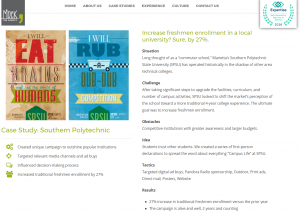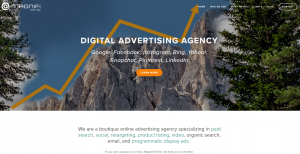The average agency-client relationship lasts 36 months, which means at any given moment one of your competitors is about to lose a client. But what if you were the one that is losing the client? Do you have the resources in place to make sure you can protect your agency from the inevitable turnover of clients?
The first resource your team needs to be investing in to protect against churn is a proactive Business Development Director. It should come as no surprise that experienced business development professionals capture a bigger slice of the new business pie than those just getting started. The tough part is identifying those directors with the right type of experience to best grow your firm.
In order to help you identify those Business Development Directors with the right type of proactive experience, we’ve listed out 6 interview questions for your next internal or outsourced partner. Being smart with these questions can make a massive difference in the amount of growth your team experiences this year.
6 Interview Questions For Agency Business Development Directors
How much “hunting” have you done?
New business—indeed, any sale—is about experience in the field. Isn’t it amazing how the best new business people always seem a bit lucky? A lot of “right place at the right time”. Well it isn’t luck, it’s hours and hours of experience working through what prospects want and need so that their message is the one bubbling to the top over all the other agencies out there pursuing new business.
How comfortable are you with approaching a prospect cold?
Cold calling or cold emailing is a complicated business. Even with tools to increase your chances of setting appointments, you have to be able to handle rejection (or worse…the cold loneliness of no response) every day without letting it affect the next conversation. If you find someone that thrives on making conversations out of nothing, then you’ve found a keeper.
What role did you play in helping to win a new client?
There are many stages to a new business win. Your potential new employee may have been involved in the first outreach call, set the appointment, gave the presentation or closed the business. It’s vital that they can recognize the value of their contribution—without over-valuing it. New business acquisition is often a team sport and we want to make sure that their expertise fits in the current team’s mix and brings value to any new business engagement.
Were you involved in face to face meetings with clients or teeing up initial conversations? What has been your involvement with client new business presentations?
While closing and prospecting are both important, they are two totally different skill sets. Many agency new business people come from a background of receiving RFPs and responding to them. That’s a very different task than going out and creating opportunities out of nothing. If you’re moving into a more proactive new business approach, your new business person needs to reflect this move.
How do you go about building strong relationships?
Business development is all about maintaining and improving relationships. Transparency, honesty, mutual respect and shared interests are as vital in a sales engagement as they are in any other relationship, and sales professionals who excel at managing their relationships are more likely to be viewed as trustworthy by their clients.
What would clients you closed say about you?
No candidate is going to lead with a negative, but the reason you ask this question is to gauge their willingness to be candid and honest about their weaknesses. We also want to find out what do they really value? Do they put emphasis on their ability to connect, to persuade, find a problem, or identify a solution? Their answers will open many new questions about their personal style and how they might go about helping potential prospects learn more about your agency.
Finally, if your reaction to a candidate isn’t an emphatic “yes,” it’s a “no.” If they can’t sell themselves then they certainly can’t sell your agency. Time to keep looking!














